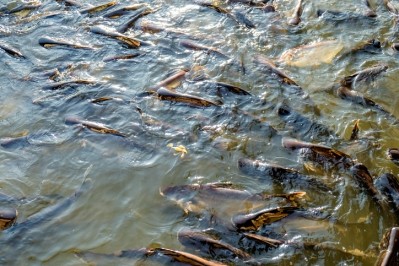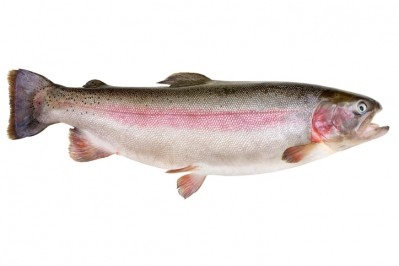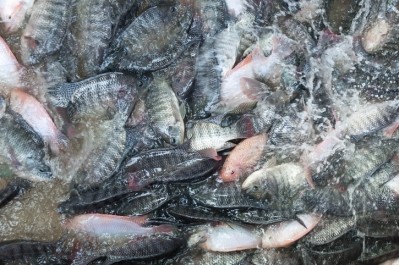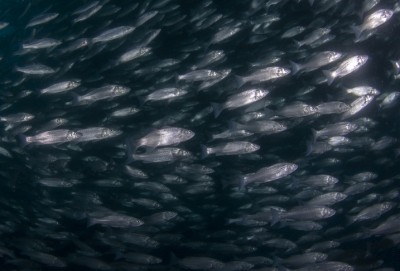Taurine in farmed yellowtail diets may boost reproduction, survival
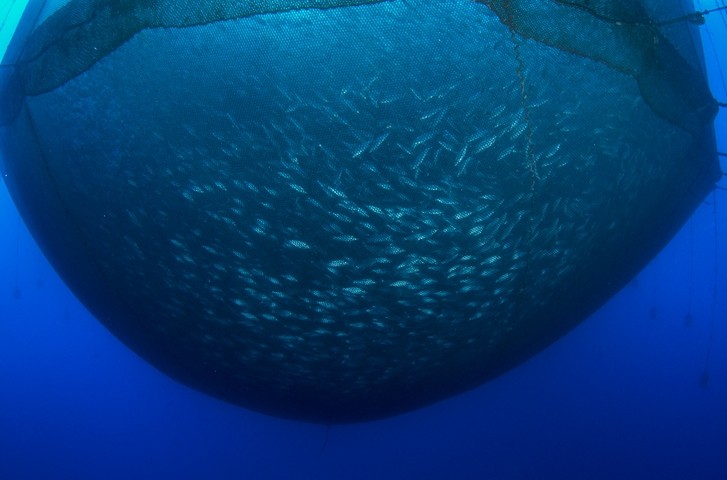
A team of researchers from Auburn University and the Hubb-SeaWorld Research Institute in California explored the use of taurine with California yellowtail (Seriola dorsalis) broodstock and larvae.
The study was published in the journal, Aquaculture.
“Our objective was to evaluate this relationship in a two-year experiment where broodstock and/or larvae of S. dorsalis received dietary taurine supplementation."
The researchers found that adding supplemental taurine to the diets of yellowtail broodstock improved egg buoyancy, ferritization rate and fecundity. Larvae from taurine-supplemented broodstock had increased yolk-sac volume and were 53% more likely to survive to their first feeding.
All larvae from broodstock not on the supplemented diets died by day 15 post-hatch, they added.
However, larvae from the supplemented broodstock that also received a post-hatch diet with increased taurine were smaller than larvae receiving other diets.
“Considering the benefits observed in reproductive output, embryonic survival, and larval performances, the present data supports supplementation in broodstock,” the researchers said. “Additional research to refine supplementation protocols (e.g., dosage and coordination with larval enrichment) will be beneficial.”
Why add taurine to yellowtail diets?
California yellowtail is thought to be one of the best from the Seriola sp. to be farm-raised in Pacific region of the US and Mexico, the researchers said. However, hatchery production of the fish in California is variable and survival rates of larvae range from 10-20%.
Feed and nutrition provided to broodstock fish are considered to be critical for the production of high-quality larvae, they said.
“While lipids, particularly the long-chain highly unsaturated fatty acids (LC-HUFA) such as arachidonic acid (ARA, 20:4n-6), eicosapentaenoic acid (EPA, 20:5n-3) and docosahexaenoic acid (DHA, 22:6n-3), have received a lot of attention and are widely recognized as essential nutrients for embryonic and larval development, proteins and amino acids are also thought to play a significant role."
Vitellogenins provide the main source of nitrogenous compounds for use by the embryo, while amino acids supply an energy source and signaling molecules along with the substrate needed for bioactive molecule function while the embryo develops.
Previously, dietary protein source has been linked to the broodstock performance of channel catfish, as spawning success fell when fish received an all-plant diet, they said. However, there is a difference in taurine content between plant-based and animal protein-based diets as plant proteins lack taurine
“As many species of fish have been found to require taurine in their diet (Salze and Davis, 2015), one can wonder whether the lack of taurine in plant-based diets played a role in the reduced eggs and larval quality observed,” they added.
Taurine is a “beta-sulfonic amino acid” present in animal tissue, the researchers said. It is typically synthesized in the liver, but some species do not generate adequate quantities and require the amino acid to be supplemented in their diets.
“Taurine contributes to a great range of physiological functions including antioxidation – though indirect (Aruoma et al., 1988; Salze et al., 2016), cell membrane stability (Takagi et al., 2006), and neuroprotection (Lima et al., 2001),” they said. “Moreover, taurine deficiency will result in reduced growth and quickly affect liver function (Salze et al., 2016).”
However, little work has explored the role taurine could play in reproduction, they said. Tilapia receiving supplemental taurine were found to have boosted “spawning frequency, fecundity, hatching rates and heavier larvae” and in S. quinqueradiata spawning rate increased along with egg quality when fed diets supplemented with the amino acid.
Feed trial highlights
During the two-year feeding trial, the same feeding test was conducted twice, the researchers said. Broodstock were raised in 10,000L tanks and received one of two diets.
The diets included a control (CB diet) moist feed with 53% crude protein, 18% crude lipid and the supplemented diet (TB diet), which added 2.5% taurine to the control feed, they said.
Eggs produced were measured and sampled with a subset assessed for hatching rate and another subset tracked for survival to first feeding, the researchers said.
Eggs were also assessed for total egg volume, egg lipid volume, number of oil globules, crude protein, crude fat, amino acid content, fatty acid content and percent hatching.
Larvae from broodstock fish on both diets were raised with a control diet (CL) or a diet enhanced with taurine (TL), they said. Larvae were fed enriched rotifer and enriched Artemia through day 30 post-hatch and, starting on day 15, a dry microparticulate feed was also provided.
Larvae were sampled at hatching and on days 2, 4, 8, 15 and 30 post-hatching to check notochord length, dry matter, crude protein, crude fat, amino acids levels and fatty acid contents.
Results
Female broodstock receiving the taurine supplement spawned more often both years than control group fish, the researchers said. However, egg morphometric variables tended to be similar, although factors like female fecundity, egg fertilization rate, oil diameter and the percent oil volume differed based on broodstock diet.
“Although composition in a specific nutrient did not markedly vary, the control and taurine broodstock group were distinguished by discriminant factor analysis with an accuracy of 75%, 100%, and 90% when using proximate composition, amino acid profile, or fatty acid groupings (sums and ratios), respectively,” they said. “With regards to proximates, crude protein was the single most important parameter driving the differentiation between the 2 groups.”
Egg hatching rate and notochord length at hatching were similar for all larvae, but the yolk sac of larvae from taurine-supplemented fish were larger, they said.
Larvae survival rate to first feeding was significantly higher for those coming from fish on taurine-supplemented diets.
In both feeding trials, larvae from the control group broodstock that also received non-supplemented feed post-hatch died between days 15 and 20 post-hatch, the researchers said. Control group larvae that received supplemented feed saw 50% and 75% mortality.
There was not complete mortality in larvae from the supplemented broodstock regardless of if they were fed supplemented or non-supplemented feed post-hatch, they said. Larvae from fish fed taurine were 56% more likely to live.
Larvae from the supplemented broodstock and that received the supplemented feed were shorter than those on other diets – either TB-CL or CB-TL – in the first year of the feeding study, they said. However, the result only tended to repeat the second year.
Larvae composition was similar for proximate composition, but amino acid profile and fatty acid groupings tended to differ, they said.
“These results support the importance of dietary taurine in reproductive performance in yellowtail broodstock,” the researchers said.
Source: Aquaculture
Title: Effect of dietary taurine in the performance of broodstock and larvae of California yellowtail Seriola dorsalis
Authors: G. Salze, A. Davis, K. Stuart, M. Drawbridge
DOI: doi.org/10.1016/j.aquaculture.2019.734262
